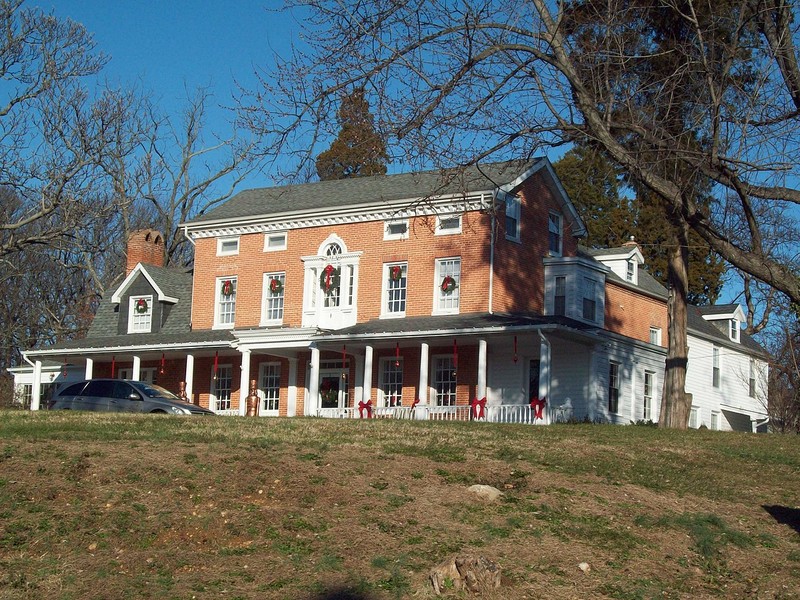Twin Oaks
Introduction
Text-to-speech Audio
A fine example of Georgian-Revival architecture, this elegant home was once the residence of U.S. Congressman John Charles Linthicum (1867-1932), who served in Congress from 1911 to 1932 and is best known for sponsoring the bill that established the "Star Spangled Banner" as the national anthem. He also hosted a number of prominent national figures at the house including William Jennings Bryan and General Douglas MacArthur. In terms of design, notable features of the house include a one-story porch with a portico and Doric columns, and a Palladian window above the main entrance. The house was built in 1857 and remains a private residence today. It was added to the National Register of Historic Places in 1986.
Images
Built in 1857, Twin Oaks was the home of Congressman John C. Linthicum, who is best known for sponsoring the bill that established the "Star Spangled Banner" as the national anthem.

Backstory and Context
Text-to-speech Audio
The house was built Linthicum's grandfather, William Linthicum, in 1857 as a wedding present for his daughter, Mary, married a man named William H.A. Brian. Mary inherited the house after William Linthicum died in 1866. John Charles Linthicum was born the next year on November 26. His father, Sweetser Linthicum, was Mary's brother. By 1884, Mary was a widow and, in need of additional income, leased the house to Sweetser. As a young man, John Charles Linthicum attended the Maryland State Normal School and graduated in 1886. He became a teacher and first taught in in Anne Arundel County schools and then in Frederick County schools the next year. He also attended Johns Hopkins University where he studied political science and economics, and studied law at the University of Maryland, graduating in 1890. He and his brother, Seth, opened a law practice in Baltimore. Linthicum got married in 1893 but his first wife, Eugenia, died in 1897. He married again in 1898 to Helen A. Perry Clarke. He never had children.
Linthicum's political career (he was a Democrat) began in 1903 when he was elected to the Maryland House of Delegates where he served on a few committees. Two years later, he was elected to the state senate and served until he was elected to Congress in 1911. He ran for Baltimore mayor in 1907 but lost. In Congress, Linthicum served as Chairman of the House Committee on Foreign Affairs and supported anti-prohibition efforts. As noted above, he sponsored the legislation to establish the "Star Spangled Banner" as the national anthem. He introduced it in 1918 but it was not passed until 1930. President Herbert Hoover signed it into law in 1931.
Unfortunately, he died suddenly in 1932 after complications during a medical procedure. Helen inherited the house and it appears remained there until she died in 1944. Her will deeded the house to a trust company which sold it a company comprised of Linthicum family members. Two years later, they sold it to Linthicum's nephew, Seth Hance Linthicum. He and his wife lived there at least until 1986 when the house was placed on the National Register of Historic Places.
Sources
"Linthicum, John Charles 1867-1932." Biographical Directory of the United States Congress. Accessed August 17, 2022. https://bioguide.congress.gov/search/bio/L000340.
Ware, Donna M. "Twin Oaks." National Park Service - National Register of Historic Places Nomination Form. March 21, 1986. https://mht.maryland.gov/secure/medusa/PDF/NR_PDFs/NR-952.pdf.
Wikimedia Common: https://commons.wikimedia.org/wiki/File:Twin_Oaks_Dec_09.JPG
